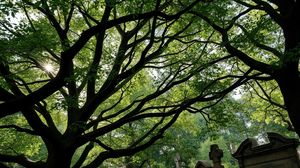
Abney Park Cemetery in Stoke Newington is one of the "Magnificent Seven" cemeteries established in London during the 19th century to alleviate overcrowding in parish churchyards. Opened in 1840, it was conceived as a garden cemetery and arboretum, combining elements of classical and Gothic monuments with a diverse array of trees and plants, creating a unique landscape for both remembrance and wildlife.
What sets Abney Park apart from many traditional cemeteries is its rich history of being a non-denominational burial ground. Unlike other cemeteries of its time, it was open to all, regardless of religious background, reflecting the progressive ideas of social reformers like Dr. Isaac Watts and the founder, George Collison.
The cemetery is the final resting place for over 200,000 individuals, including an array of notable figures. Among them is William Booth, the founder of the Salvation Army, whose grave brings many visitors interested in religious and social history.
Abney Park Cemetery is renowned for its picturesque chapel, which is now a listed building. This chapel is a poignant example of early Gothic Revival architecture and remained unique for being nondenominational, catering to all faiths from the beginning.
A walk through Abney Park Cemetery is like a journey through time, offering a glimpse into the past with its Victorian funerary art. Graves are adorned with intricate stonework, angels, and weeping figures, adding an air of somber beauty to the already serene environment.
It is also an urban wildlife reserve, providing habitat for various species of birds, bats, and other wildlife. Its untamed nature and rich biodiversity make it a surprising pocket of wilderness within the city, offering a peaceful retreat from the bustling urban environment.
The site is steeped in cultural lore, having appeared in various films, books, and even song lyrics. Its evocative and sometimes haunting atmosphere has made it a popular spot for artistic inspiration and leisurely exploration.

Making the Most of Your Visit:
Make sure to stop by the chapel in the cemetery. It's one of the earliest examples of Gothic Revival architecture in the UK and, although it's no longer in use for services, it's a fascinating structure to admire from the outside.
Don't miss the grave of William Booth, the founder of the Salvation Army. It's a point of pilgrimage for many, and the story of his life and work is significant in the context of London's social history.
If you're a fan of nature, take your time to explore the diverse flora in the cemetery. Abney Park was designed as an arboretum, so you'll find a wonderful variety of trees and plants that make it a key green space for urban wildlife. Bring binoculars if you're into birdwatching; there are a surprising number of species to spot.
The cemetery is a peaceful spot for contemplation and reflection, and it's also an artistic inspiration for many. If you're into photography or sketching, you'll find plenty of evocative scenes to capture among the ivy-clad gravestones and aged monuments.
Visit in different seasons if you can. Each time of year brings a new atmosphere, from the spring blossoms and rich greens of summer to the haunting beauty of bare branches in winter. Each season offers a different perspective on this unique blend of nature and history.

Visiting Times & Costs:
Abney Park Cemetery is open to the public daily. There is no entrance fee to visit the cemetery, making it a wonderful free attraction for those interested in history, nature, or a peaceful walk.
Opening hours: The cemetery is generally open from dawn until dusk. It is advisable to check locally or with the relevant authorities for any seasonal variations in opening hours.
Accessibility: While the main paths in Abney Park Cemetery are relatively flat and wide, some areas may be challenging to traverse for visitors with mobility issues, particularly in poor weather when paths can become muddy. Visitors are encouraged to wear appropriate footwear and be aware of uneven surfaces.

Address & Map:

Nearby:























